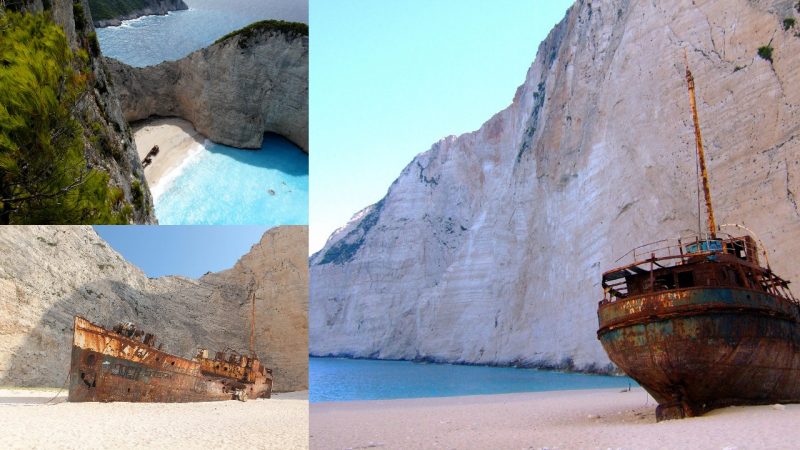Navagio Beach or Shipwreck Beach, is an exposed cove, sometimes referred to as “Smugglers Cove”, on the coast of Zakynthos, in the Ionian Islands of Greece. Navagio Beach was originally known as Agios Georgios.
On October 2, 1980, a freightliner, the MV Panagiotis, ran aground in the waters around Zakynthos Island right on Navagio Beach after stormy weather and bad visibility.
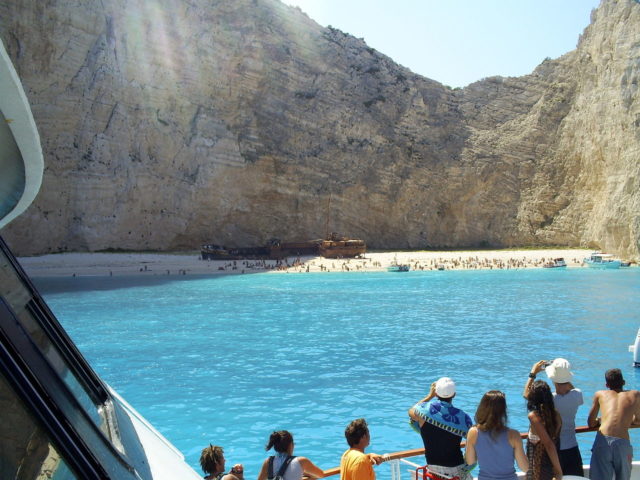
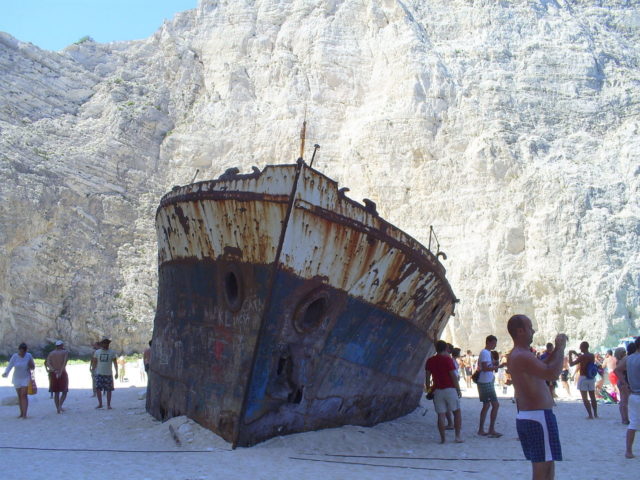
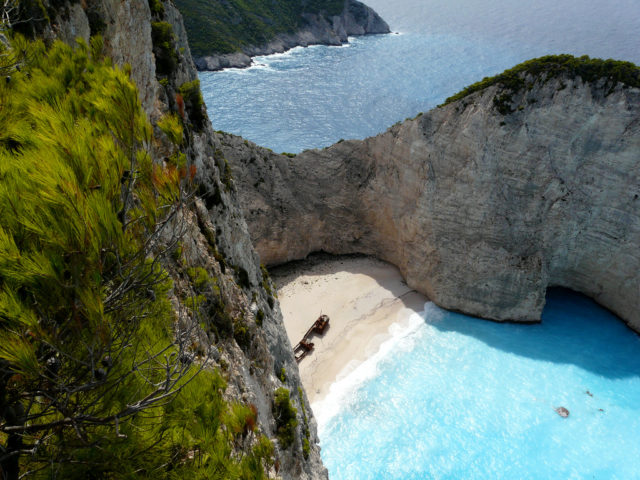
The Panagiotis was built in 1937 at Bowling on the River Clyde as Yard 341 by Scott & Sons, and fitted with a 500 bhp diesel engine made by British Auxiliaries Ltd. When built, she measured 163 feet in length and 26 feet in width. She had a draft of just over 11 feet, and a gross register tonnage of 452.
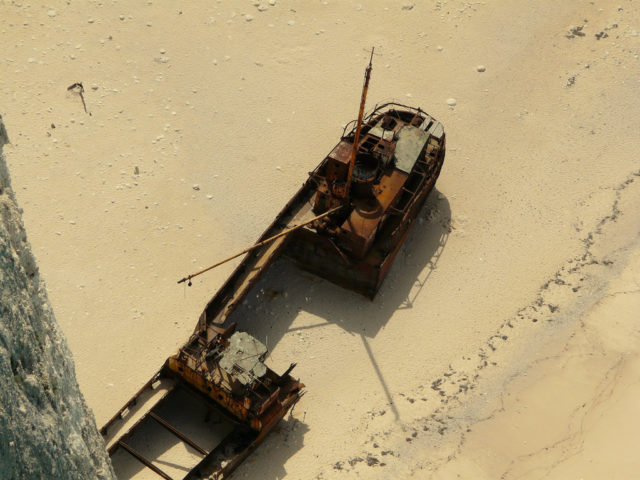
The most commonly accepted story regarding the wreck of the Panagiotis maintains that she spent the later part of her life as a smuggling ship. In 1980 (during a time of record population lows on the island of Zakynthos), Panagiotis was making its way from Turkey with a freight of contraband cigarettes (for the Italian Mafia, as some versions of the story assert). The crew was suspected by authorities, and so the Panagiotis was pursued by the Greek Navy. After the ship ran aground, the crew abandoned her to evade the pursuing Navy.
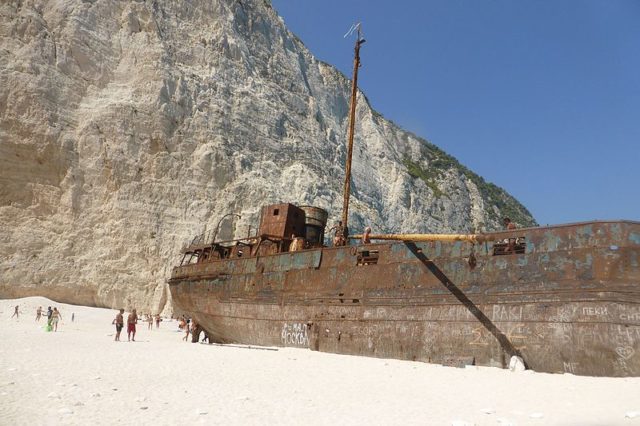
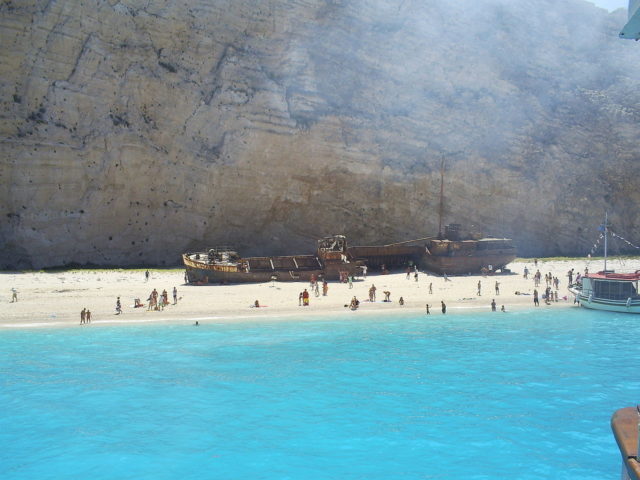
Navagio is located on the north-west shore of Zakynthos (Zante), in the Municipality of Elation. The area is defined by its sheer limestone cliffs, white sand beaches, and clear blue water, which attract thousands of tourists yearly. The strip of beach is accessible only by boat. Regular tours to the beach depart from Porto Vromi to the south, and from Agios Nikolaos and Cape Skinari to the north-east. Boats also arrive from the harbor of Zakynthos city.
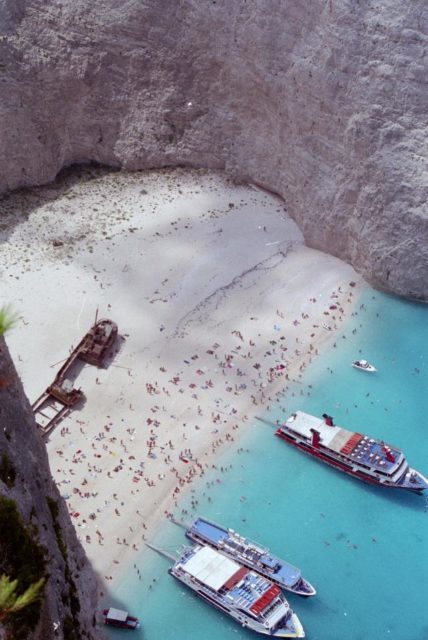
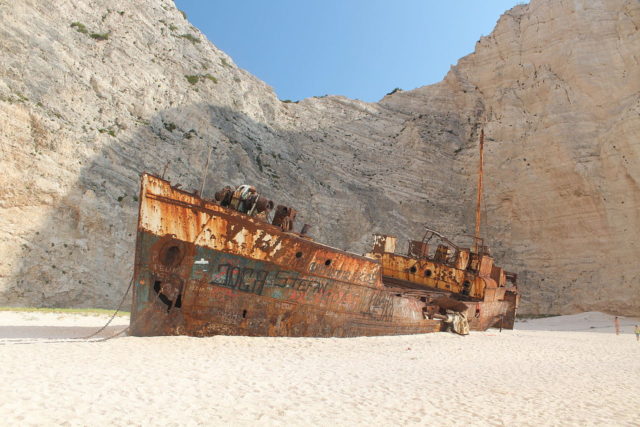
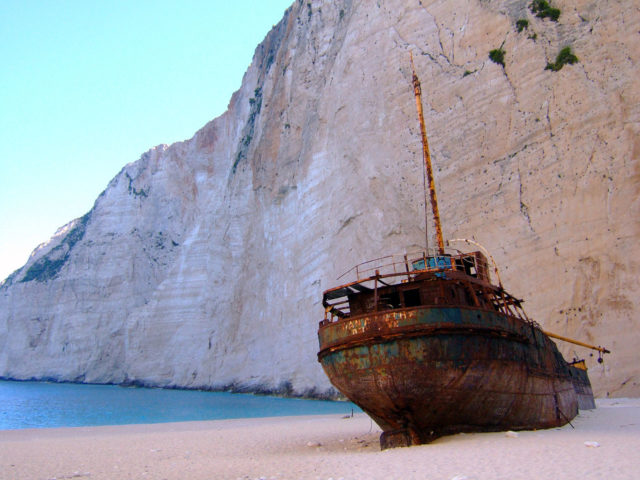
The shipwreck beach is so popular that various photographs of the rotting wreck on the white sandy beach often appear on many tourist brochures and websites about Zakynthos. Although officially abandoned, Navagio beach is often packed with tourists.
